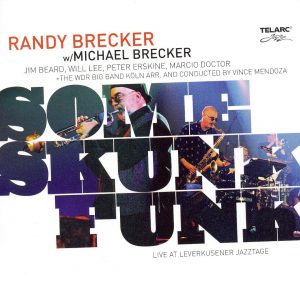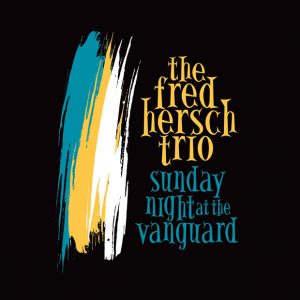
La Fenice (ECM)
Keith Jarrett
Released October 19, 2018
New York Times Best Jazz Albums of 2018
YouTube:
https://music.youtube.com/playlist?list=OLAK5uy_mhxz_fBidupS9enlxUXMvJ2g4wLAwIMEw
Spotify:
About:
This double album, long anticipated, presents Keith Jarrett’s concert at the Gran Teatro La Fenice in Venice, from July 2006. The setting – one of Italy’s most famous classical venues – may evoke some parallels with La Scala, the pianist’s much-loved 1995 recording, but each of Jarrett’s solo performances is its own world, his protean creativity continually bringing new forms to light. La Fenice (the phoenix) finds him channelling the flow of inspiration into a suite of eight spontaneously created pieces referencing everything from the blues to atonality. From the first flurry of notes, it is a consistently captivating journey. Between Part VI and Part VII, Jarrett surprisingly but very touchingly segues into “The Sun Whose Rays”, from Gilbert and Sullivan’s opera The Mikado.
Encores are the traditional tune “My Wild Irish Rose” (previously recorded by Jarrett on The Melody At Night With You), the timeless standard “Stella By Starlight”, which the trio with Gary Peacock and Jack DeJohnette often played (see for instance the albums Standards Live and Yesterdays). The concert ends with a tender version of Keith’s tune “Blossom”, first heard on the Belonging album with Jan Garbarek, Palle Danielsson and Jon Christensen back in 1974.
La Fenice could be considered the culmination point of a series of solo concerts that began the previous September with the The Carnegie Hall Concert. Reviewing that performance, Fred Kaplan of The Absolute Sound wrote: “His concert pieces, all pure improvisations, are models of economy, themes stated, explored, varied on, departed from, returned to, done – and gripping from start to finish. The encores were similarly taut – and lyrical and gorgeous.”
Release of the Venice concert is timely. The 62nd International Festival of Contemporary Music of the Biennale di Venezia has honoured Keith Jarrett with its Golden Lion for Lifetime Achievement. It’s the first time that a “jazz” musician has received this award, which has previously been given to contemporary composers including, in recent decades, Luciano Berio, Pierre Boulez, György Kurtág, Helmut Lachenmann, Sofia Gubaidulina and Steve Reich. Of course, there is more than one way to be a contemporary composer, as Keith Jarrett eloquently illustrates on La Fenice, shaping his musical structures in real time.
Track Listing:
CD1
1. La Fenice, Part I (Keith Jarrett) 17:44
2. La Fenice, Part II (Keith Jarrett) 03:26
3. La Fenice, Part III (Keith Jarrett) 09:47
4. La Fenice, Part IV (Keith Jarrett) 07:15
5. La Fenice, Part V (Keith Jarrett) 06:36
CD 2
1. La Fenice, Part VI (Keith Jarrett) 13:32
2. The Sun Whose Rays (A.S. Sullivan, Arthur Gilbert) 04:22
3. La Fenice, Part VII (Keith Jarrett) 05:30
4. La Fenice, Part VIII (Keith Jarrett) 07:15
5. My Wild Irish Rose (Traditional) 07:03
6. Stella By Starlight (Victor Young, Ned Washington) 06:33
7. Blossom (Keith Jarrett) 08:35
Personnel:
Keith Jarrett: piano
Recorded July 2006, Gran Teatro La Fenice, Venice
Producer: Keith Jarrett
Engineer: Martin Pearson
Mastering: Christoph Stickel, Manfred Eicher
Front and Back Cover Photos: Juan Hitters
Design: Sascha Kleis
Executive-Producer: Manfred Eicher
La Fenice Concert Produced by Giuseppe Mormile, Veneto Jazz
Review:
This double album finds Keith Jarrett in an inspired mood during a 2006 concert in Venice Italy. The program, recorded in the famous Gran Teatro, has Jarrett dividing the evening between improvisations and well selected standards.
The 8 part improvs includes a mix of drama and rapidly scrambling fingers on the lyrical “Part II” with Monkish moods for the splashy “V”. A bluesy and lurking “VIII” contrasts well with the classical leaning “VI” with pastoral spaciousness creating rich images for the romantic “VII.” For my money, the standards feel like Jarrett has memorized the lyrics. “My Wild Irish Rose” is reverent and majestic, while the Gilbert and Sullivan “The Sun Whose Rays’ is stately and folksy. Jarrett is most boppy on a rich and flowing “Stella By Starlight,” with this album reflective just about every color from Jarrett’s prism.
George W. Harris (Jazz Weekly)





